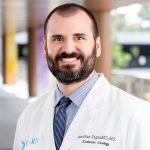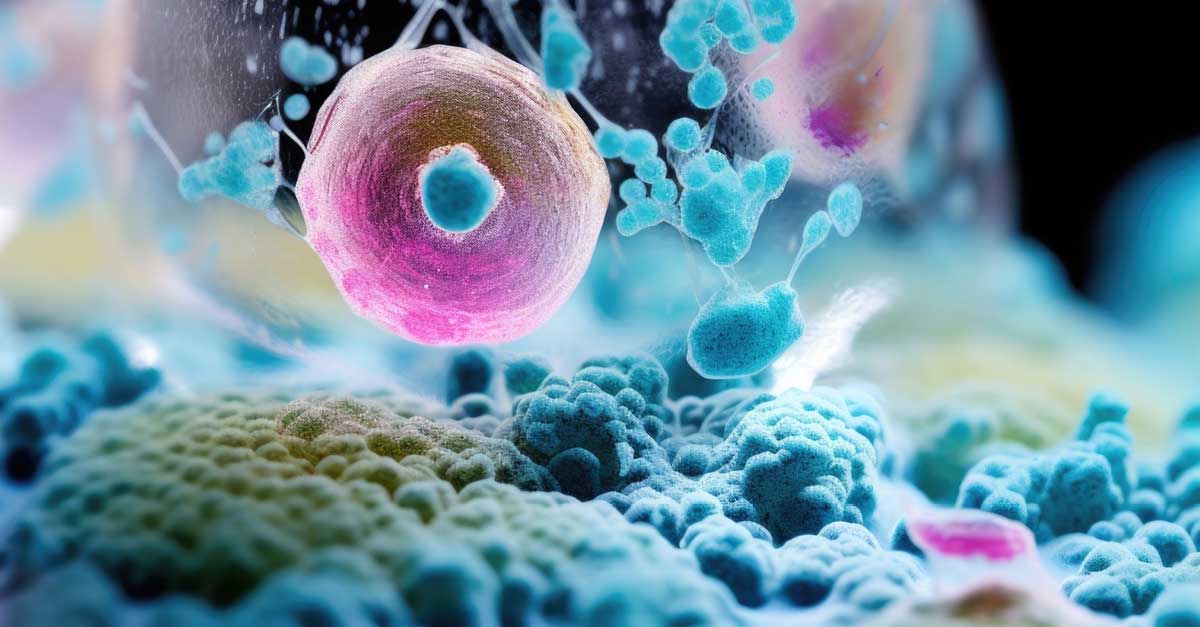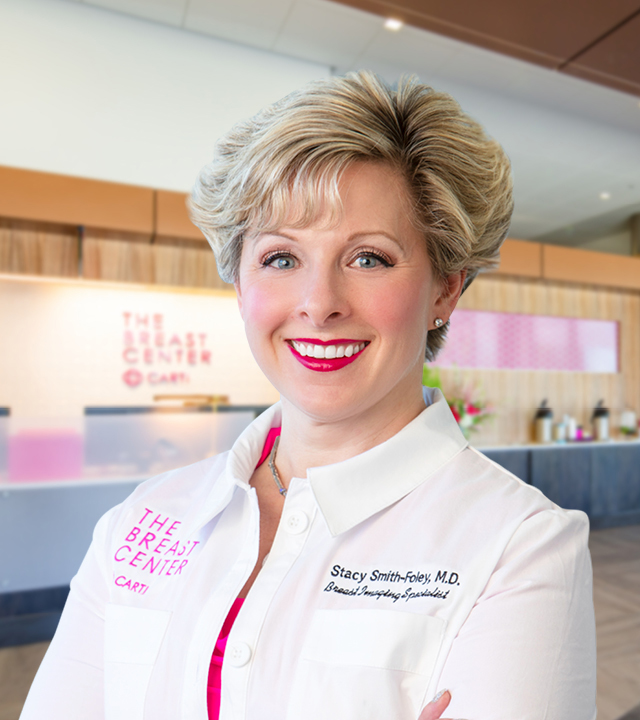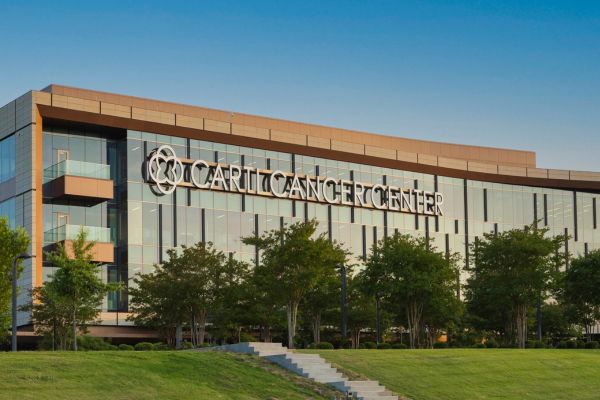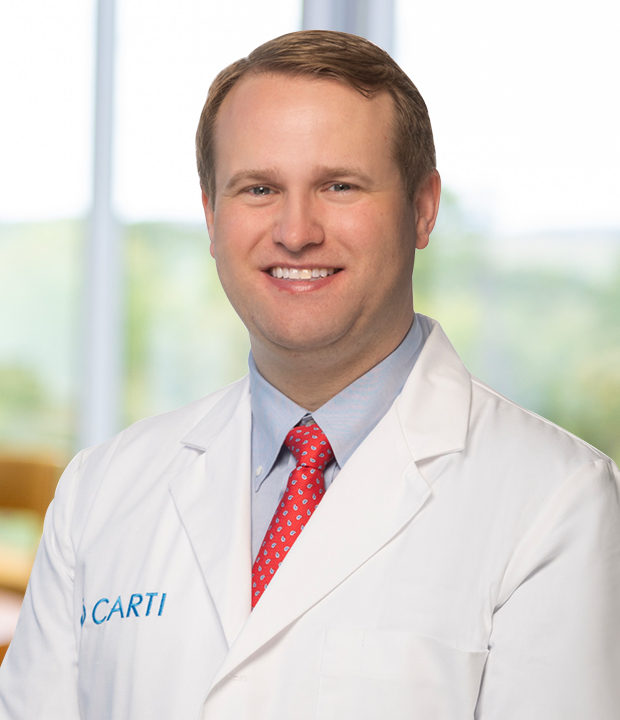Cancer in the Wake of COVID
As seen in the May/June issue of the Healthcare Journal of Arkansas.
As we move into year two of the coronavirus pandemic, the health impact it has on the patients we treat continues to evolve. Although the financial impact has been dire, some industries have been able to pause, or pivot, during the pandemic with little to no impact on the customers they serve. Oncology is not one of those. Cancer doesn’t stop for a pandemic, and neither can we.
We have all had to adapt our practices and techniques to continue providing patients with the highest level of care. That is why we felt it important to reflect on how the disease, and its vaccines, have impacted the ways in which we provide care to our most vulnerable patient population.
BREAST IMAGING
Stacy Smith-Foley, M.D., Breast Imaging Specialist, and Jessica McElreath, M.D., Breast Imaging Specialist
It has recently come to attention that some women may develop swollen lymph nodes under the arm after receiving the Moderna and Pfizer-BioNTech COVID-19 vaccines. The enlarged lymph nodes may be palpable, tender, or detected asymptomatically on mammograms. While swollen lymph nodes with an otherwise normal screening mammogram is a rare occurrence, reported in only 0.02%-0.04% of screening mammograms, higher rates of enlarged lymph nodes are being reported on mammograms in women following COVID vaccination.
With more than 20% of Arkansans being fully vaccinated, it is important that women understand this is a normal immune response to a vaccine, and the lymph nodes should return to normal within a few days or weeks.
To reduce the chance of swollen lymph nodes appearing on a screening mammogram after receiving a COVID vaccination, The Society of Breast Imaging suggests patients consider scheduling their screening mammogram before their first COVID vaccine dose, or 4-6 weeks after the second dose if, and only if, it does not unduly delay care. If patients are experiencing a breast problem or concern, it is important that they do not delay their mammogram appointment. Patients may also not want to delay their screening mammogram appointment if they are overdue for their yearly mammogram, or deferred having their screening mammogram last year due to the pandemic.
The Breast Center at CARTI has updated our patient questionnaire to include whether the patient has received any recent vaccinations, when it was administered and the location of the injection. This information helps us as we interpret breast imaging studies such as mammograms, ultrasounds, and MRIs.
MEDICAL ONCOLOGY
Rhonda Gentry, M.D., Medical Director of Medical Oncology
The impact of the coronavirus on medical oncology volume has interestingly been minimal, and our volumes have continued to increase overall. Like many other specialties, we have, unfortunately, seen that some patients presented later than they would have outside of a pandemic, and thus we have seen more advanced cancers as a result.
The vaccine has profoundly impacted our patients in a very positive way. Aside from the obvious physical protection that is conferred, they psychologically and emotionally are freer to live life to the fullest again, despite difficult medical journeys. This can go a long way in a patient’s approach and ability to navigate a cancer diagnosis.
While we should be encouraging most of our patients to receive the vaccine whenever they are eligible, occasionally, we have purposefully postponed the timing of it for some patients currently undergoing chemotherapy. We do this to minimize the side effects from chemotherapy in hopes that the tolerability of the vaccine would be better.
RADIATION ONCOLOGY
Matthew Hardee, M.D., Ph.D., Medical Director of Radiation Oncology, and Jonathan Pagan, M.D., M.S., Radiation Oncologist
Radiation plays a vital role in fighting many different types of cancer, and often requires patients to come into the clinic for daily treatments over multiple weeks. This presented many challenges early in the pandemic, and resulted in diagnostic delays due to operating room shut downs. Our normal practice has been to implement shorter course treatments (hypofractionation, SBRT) when applicable and safe, so our recommended treatment courses for patients were not all that different.
Similar to our experience with enlarged lymph nodes during mammograms, we have experienced patients who have gotten the vaccine having enlarged lymph nodes on imaging. In collaboration with radiology, we have been able to tease out whether these findings are truly related to their cancer. That said, the most important change since the rollout of the vaccines is that we are seeing less patients having to quarantine due to a covid exposure, which allows them to be able to continue with their life saving treatments.
It is important to note that with rare exceptions the COVID vaccine is safe to receive during the course of radiation treatment. Thankfully, there is no need to alter, delay or stop radiation treatments for patients who are considering receiving the COVID vaccine. In fact, we highly encourage people to get their vaccine and are able to work our treatment schedule around their vaccine appointments to make it as easy as possible for them to get vaccinated.
Obviously, there could be an impact on outcomes due to diagnostic delays during the pandemic. We have seen numerous patients who knew something was going on, but who chose not to seek care because of fears of the virus. That led to delays of up to six months or more in getting their cancer diagnosed and treated.
Radiation oncology as a practice has been moving toward shorter, more efficient treatment schedules, and the pandemic helped nudge some practices further that way if they were reluctant to do so before that pandemic.
HEAD AND NECK SURGERY
Scott Stern, M.D., Chief Medical Director and Medical Director of Surgical Oncology
The coronavirus pandemic has had a tremendous impact in the field of head and neck surgery. From the earliest reports out of China, we knew that the virus was predominantly located in the upper airway, the space in which we examine and operate on patients on a daily basis.
This led to a host of very specific protocols for our patients. For example, our speech pathologist was the only person in the state changing voice prostheses, which allow our patients who have had their voice box removed the ability to speak. This required very specific PPE and for our organization to implement significant cleaning protocols for our exam rooms, which we performed rigorously. We did not change any of our treatment protocols; our staff simply went above and beyond in order to make sure that all our patients were able to receive top notch care.
Many providers had to close temporarily, so we made sure that anyone who needed leading-edge head and neck surgical care would be seen and treated. Almost every case we do is an “aerosol generating procedure”, so we had to be extremely careful, for ourselves and our patients. We took every precaution necessary, double masking with N-95s under our surgical masks and using eye protection for every case. In any patient with known COVID, we still treated them, but we used PAPR respirators for maximum protection.
Even with our continued clinical availability, we did see a trend toward later diagnosis because of patients’ fear of contracting COVID in a medical setting. In spite of this trend, we are fortunate that we have not had a significant change in patient outcomes. Thanks to our dedicated staff, we have been able to offer exemplary care without sacrificing treatment protocols.
As we generally treat solid tumors, we have encouraged all of our patients to be vaccinated as soon as they are able. I ask every patient about their vaccination status, and spend time talking with them about the vaccines and their safety.
From the standpoint of our specialty, I anticipate that we may continue wearing masks during clinical visits for both our staff and our patients’ protection for the foreseeable future.
THE PATIENT EXPERIENCE
While we have ensured that treatment options remained unchanged, ever-changing guidelines from state and federal health agencies have dramatically impacted the patient experience.
Oncology care is a very intrapersonal discipline, and for months at the beginning of the pandemic we had to switch to virtual visits to help keep our patients safe. Thankfully, due to public health measures, PPE and the vaccine being more widely available, we have been able to safely bring patients back into the clinic for their regular visits.
Due to the need for social distancing and strict screening protocols, there have been times, when infection numbers peaked, that visitors were not allowed to accompany patients for their visits, causing patients to be physically alone through part of their cancer journey. By virtue of the medicine we practice, a portion of our time is spent delivering tough news and navigating difficult conversations. To help patients feel supported in these moments, many practices have utilized telemedicine, Facetime and speakerphone options to include family members in these sensitive patient visits.
In addition, where we once were able to physically comfort patients by holding hands or offering a hug, we are now unable to do so unless we are wearing head to toe PPE. This has made very intimate moments feel more sterile and less authentic.
As vaccinations become more readily available, we expect that oncology care will return to “normal”, but it may be a new normal we have yet to experience. As long as oncology care providers can take care of patients in a safe and efficient manner, we can weather this and any other storm that may lie ahead.




